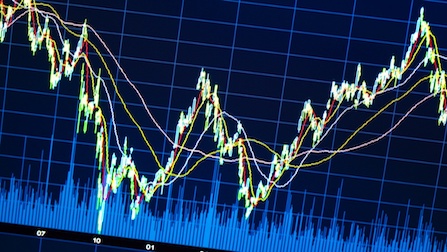Fundamental analysis is another technique used to trade. Fundamental analysis is a technique that is used to determine the value of an asset by focusing on underlying factors that affect the company’s future aspects and its actual business. With this technique,
you need to analyze the economic well-being of a financial entity as opposed to its price movements alone.
Fundamental analysis is used to identify those assets which are under-valued in the market, which means that they are selling at a lower price than the asset’s intrinsic value. This analysis assumes that buyers would be attracted by the low prices, and this would make them buy the asset in a sufficient enough amount to increase its price.
The Objectives of Fundamental Analysis
The objectives of this analysis technique include the following:
-
To conduct an asset valuation and predict where its price will go;
-
To make a projection on its business performance;
-
To evaluate the management of the property and make internal financial decisions;
-
To calculate credit risk of the asset;
-
To find the intrinsic value of the property.
The Mechanics of Fundamental Analysis
To conduct this analysis, you need to complete an in-depth and all-around study of the asset and its underlying factors. This would help you determine future prices and market developments. A combination of data is used to establish the actual current value of assets, whether they are overvalued or undervalued and the future value of the assets.
The Role of Fundamental Analysis in Trading
The first factor that you need to take into account when making use of fundamental analysis in trading17 are the pro t sources that you are targeting as these can help you understand how to make someone else’s money on your own. There are three kinds of pro t sources that are crucial to understanding:
-
When your fellow traders (with less knowledge and experience as compared to you) become a source of pro t for you. You can bene t from their losses by using better trading skills.
-
Initial public offerings and issuing additional stocks can give you the chance to cash in on the discrepancy between the price of the stocks or assets and the prices at which they will settle.
Established companies, mutual funds and other financial organizations can act as portfolio builders for traders. The trader’s pro t will then become the compensation for the risks he or she has taken.
However, fundamental analysis is not suitable for any short-term decision-making methods. Thus, you should make use of it in a strategical manner for longer periods of times.
A fundamental analyst would believe that the real value of an asset is based on its stability, earning potential and ability to grow. By exploiting the mispricing that occurs when an asset is priced at a value under or over its real value, the principal analyst seeks to pro t by utilizing one of the two main schools of thought: growth investing and value investing.
The 2 Approaches
Fundamental analysts make use of two different methods:
-
The top-down approach makes the analyst start their analysis with global economics (like GDP growth rates, inflation, interest rates, productivity, etc.) and then narrow their research to regional or industry analysis (like total sales, price levels, entry or exit from the industry, etc.).
-
The bottom-up approach is when the analyst starts with a particular business and then moves on to a more macro analysis.
The Problems with Fundamental Analysis
There are some serious drawbacks to making use of fundamental analysis:
-
There are an in nite number of factors that can affect the earnings of a company, its assets and price over time and take them all into consideration when conducting this analysis can be tough.
-
The data being used to carry out the analysis may be out of date.
-
The earnings that have been reported by a company might be deceptive and dubious.
-
Giving proper weightings to the different influencing factors may be difficult.
-
The results obtained from this in-depth analysis only remain valid for a short period and forecasts may become downgraded.
-
The rules of this analysis are always changing as a way to suit the trading game.
-
The fundamental analysis assumes that the analyst is completely competent, which is not
always the case.
-
A single fundamental analyst will understand that other analysts will form the same point of view of the asset, and this will cause the value of the asset to be restored. Again, this may not always be the case.
-
This analysis technique does not take random events into account, like oil spillages, etc.
-
It also assumes that there is no monopolistic power over the markets.
It does not indicate anything about the timing of trade, and you might have found an asset whose value has been falling for quite some time and will continue to fall, but you would not know when to make the trade.
Criticisms of Fundamental Analysis
Followers of the efficient market theory believe that fundamental analysis is awed because
it is not possible for someone to outsmart the market and identify mispriced assets using information that is available to the public.
Another source of great criticism of fundamental analysis is the fact that many believe that it is impractical. It causes analysts to come to vague conclusions about an asset and the number of variables that should be studied.
Thus, you need to apply fundamental analysis appropriately as it does not suit all market conditions and the fact that it is quite time- consuming means that you need to make sure that fundamental analysis is the option you want to go with. You should keep all of the problems under consideration before
you decide to apply fundamental analysis and it would also be best for you to make use of another technical analysis technique as a way to ensure that the decisions you make based off of the fundamental analysis are not misguided.
Read the full article and more download our FREE Insiders Guide to Forex and CFDs. That’ll Help to Improve Your Forex & CFD Trading Skills and Assist You to Make Consistent returns!






